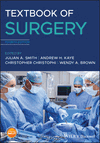Surgical techniques
Summary
Surgical technique describes the principles of surgical treatment. Joseph Lister first described a reduction in surgical infection following the introduction of aseptic techniques and this remains a key principle of surgery. Surgery has advanced significantly from his time and now includes innovations that include endoscopic, laparoscopic and robotic surgery and each requires different techniques and skills. This chapter outlines aseptic techniques, sterilisation and the hazards of the surgical environment to both the patient and staff. Surgical safeguards such as the World Health Organisation surgical safety checklist are also outlined. Surgical instrumentation, haemostasis, suturing and suture materials are discussed along with surgical drains and vascular access.



